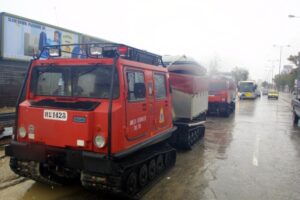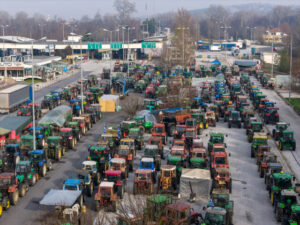Vasilis Kikilias, the Minister of Climate Crisis and Civil Protection, outlined a flood response plan for Attica, comparable to the recent severe flooding in Valencia and the broader southern regions of Spain. He discussed this plan during an interview on ANT1 on Thursday night.
After initially advising citizens to remain calm, Mr. Kikilias assured that “there is a service plan for Attica.” This involves the Risk Assessment Committee, the National Observatory, the Hellenic National Meteorological Service (EMY), the president of the Earthquake Planning and Protection Organization (OASP), and leading meteorologists who provide alerts for extreme weather events, including public notifications via the 112 emergency service.
Immediate Coordination
The plan, as explained, focuses on the “immediate, rapid, and cross-sectoral” coordination of the Hellenic Police, the Fire Service, the Coast Guard, the Armed Forces, and both levels of local government. Firefighting units will be deployed at five strategic base stations in areas of Attica that have faced flood issues over the past 40 years:
- Magoula
- Rentis
- Kifisos
- Acharnes
- Pallini
- Elliniko
According to Mr. Kikilias, these locations will be equipped with military vehicles such as hammers, amphibious units, the Cobra Team, rescue boats, and the Special Disaster Response Unit (EMAK) to intervene if necessary, in addition to the standard water pumping operations conducted by the Fire Service.
In case of a more severe scenario, comparable to the Daniel storm, the 112 alert system will be activated to enforce a traffic ban in the basin area. Schools, sports venues, and cultural sites will be closed, and remote work will be implemented for both the Greek public and private sectors.
Mr. Kikilias clarified that “only critical infrastructure will remain operational to prevent traffic congestion, limiting movement to approximately 5,000 personnel from the Fire Brigade, Police, and Armed Forces.”
Public Information
Simultaneously, efforts will be made to inform residents in low-lying areas, below sea level or near the Kifisos riverbed, advising them to avoid basements and ground floors and to move to higher levels in homes or public shelters. This strategy aims to reduce the potential for loss of life.
Ask me anything
Explore related questions





